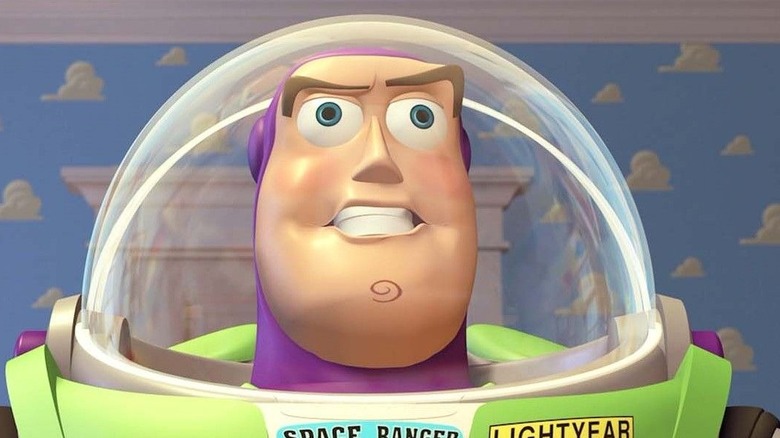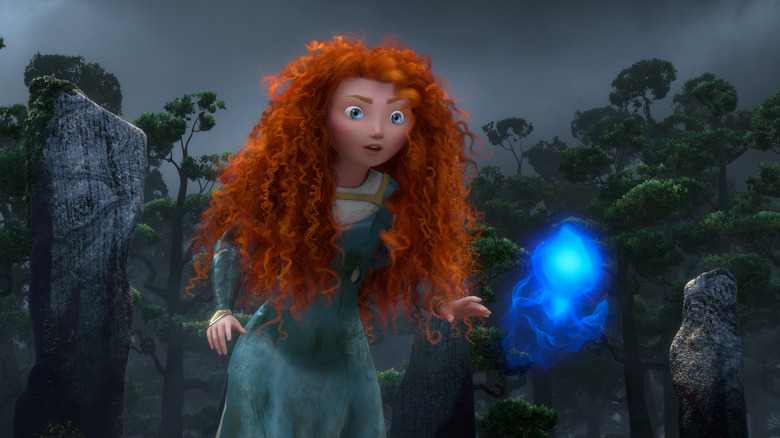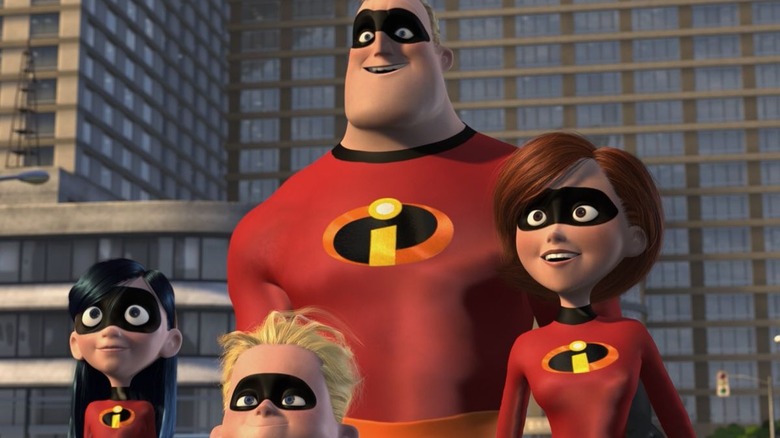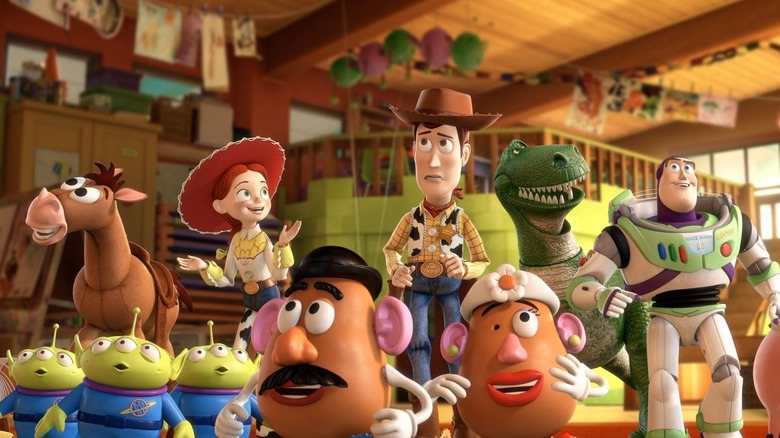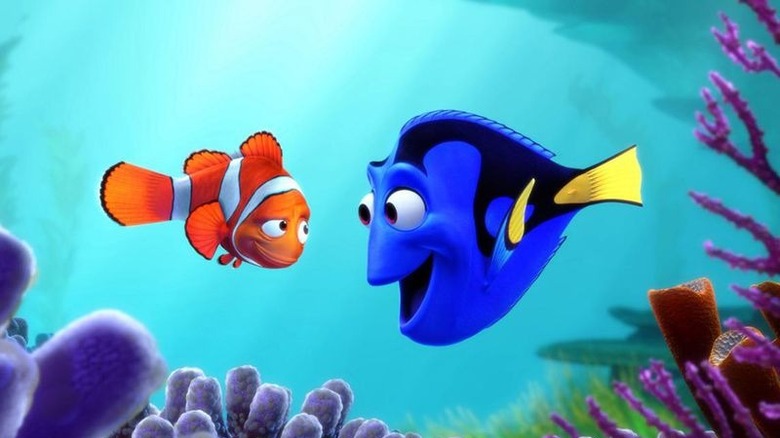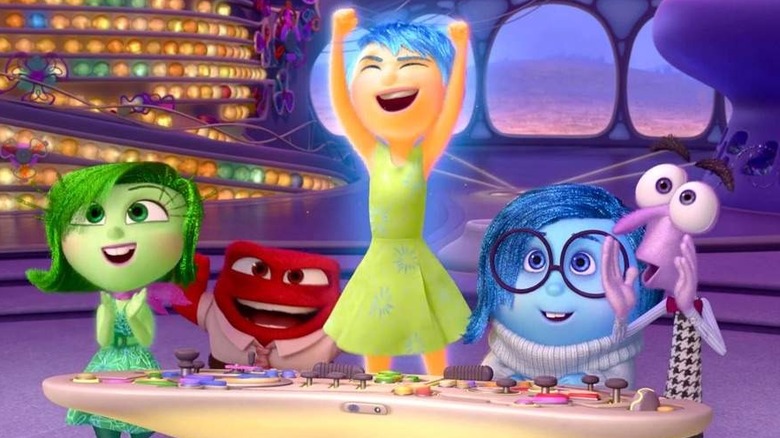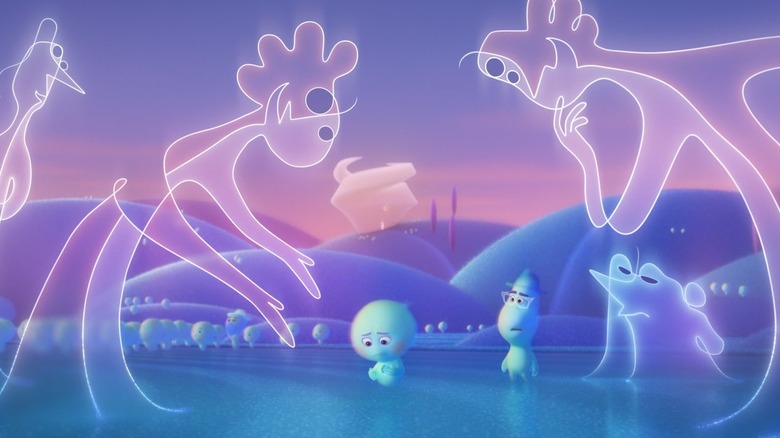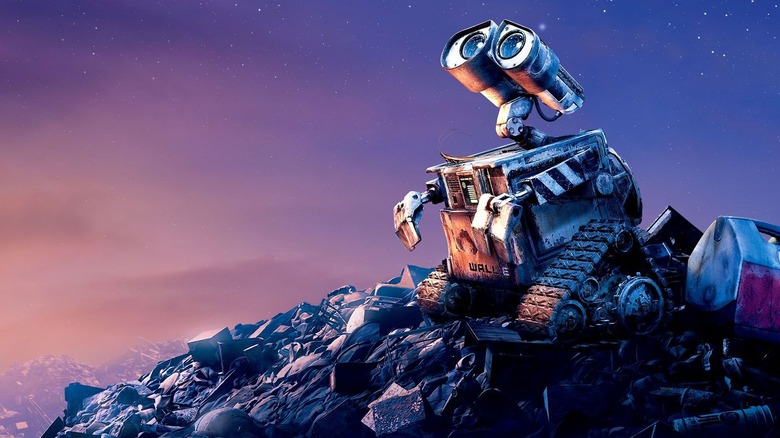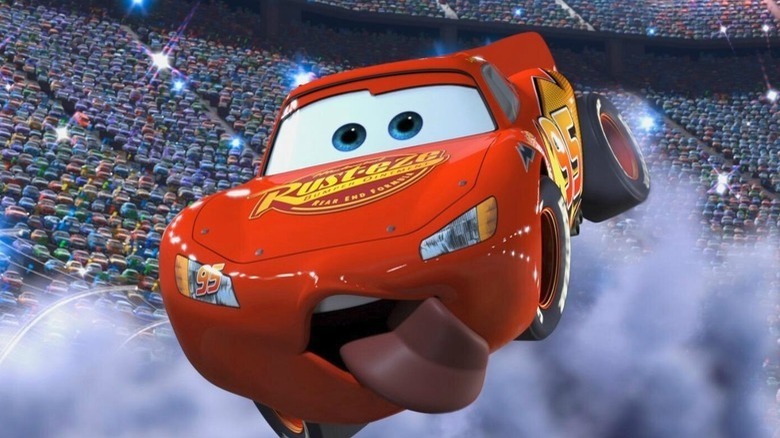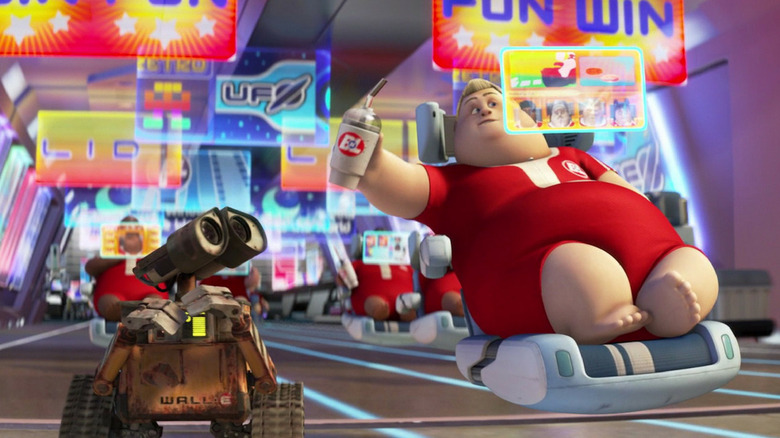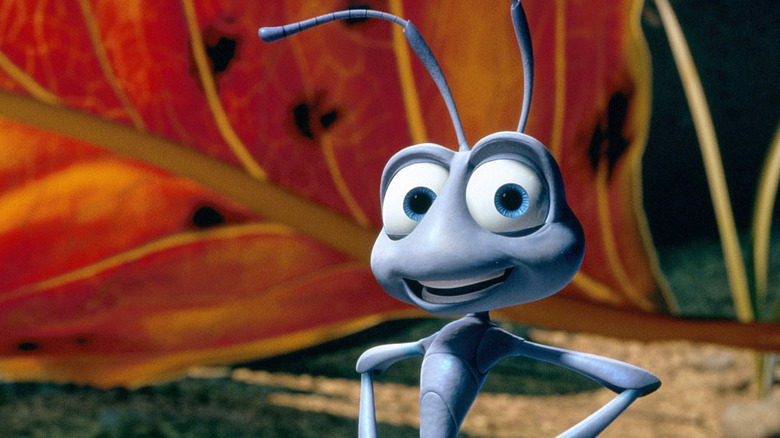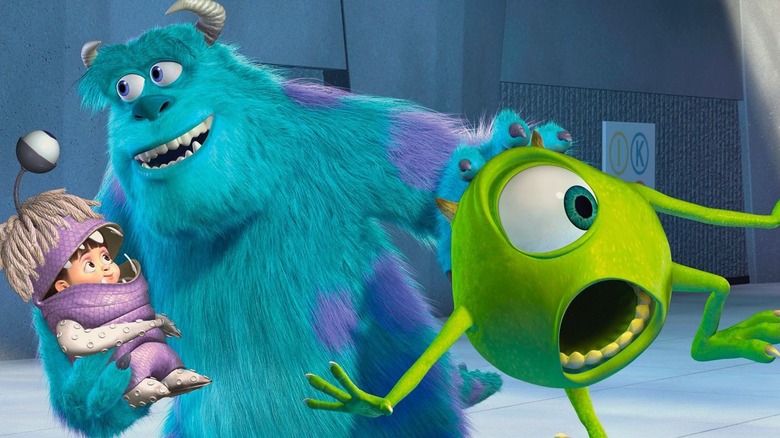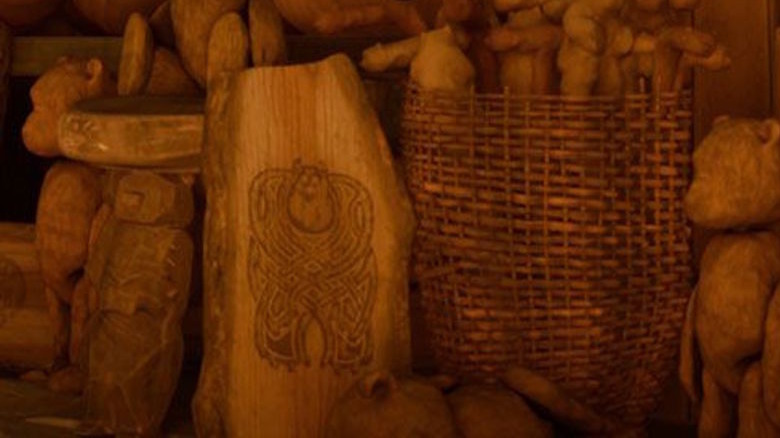The Entire Pixar Theory Timeline Explained
Have you ever wondered if the Pixar films might be connected? Well, if you haven't before, we're about to blow your mind. In 2013, a pop culture writer named Jon Negroni proposed "The Pixar Theory." The theory posits that every Pixar story exists in the same universe, and the events of each film affect or are affected by the circumstances of the other films. Pixar has hinted that there might be connections between the films by placing Easter eggs in their movies that make explicit references to other Pixar properties. Negroni noted all these hints -– and many other narrative connections -– to put together a convincing theory.
One of the things you need to know if you're going to understand the Pixar Cinematic Universe, as Negroni calls it on YouTube, is the overall timeline. Negroni has compiled a handy timeline that will help you understand the theory. However, there have been a few films that have come out since Negroni made that timeline. To that end, Jason Hamilton has compiled an updated timeline of the Pixar Cinematic Universe. The gist of it is that "The Good Dinosaur" occurs in prehistoric times, "Brave" takes place in the 10th century, while "The Incredibles" and "Luca" take place in the 1950s or 1960s. The rest of the films take place during the time periods they were released, until "WALL-E," which takes place in the future, as does "Cars," "A Bug's Life," "Monsters Inc." and "Onward."
If this still sounds confusing to you, keep reading to discover how every Pixar film is connected according to the Pixar Theory timeline.
Going back to where it all began
"The Good Dinosaur," which is chronologically first in the Pixar timeline, presents an alternative history that reverberates throughout the rest of the timeline. Essentially, "The Good Dinosaur" posits that an asteroid never hit the Earth, preventing an extinction-level event. This means that dinosaurs continue evolving and roaming the Earth for millions of years before humans arrive on the scene. We see in the film that dinosaurs are very intelligent and have created their own highly functioning communities, which suggests that animals can become just as smart as humans when allowed to evolve without human interference. The intelligence of animals will become very important further down the timeline.
The second Pixar film in the timeline is "Brave," set somewhere around the 10th century. Though "The Good Dinosaur" was first, "Brave" is the Pixar Cinematic Universe really begins. "Brave" introduces magic into the world, and the magic in the film is used to make inanimate objects sentient, turn humans into animals, and, crucially, create portals using doors. These three innovations are incredibly important in the Pixar timeline and lay the groundwork for what's to come — but their origins might not be what you expect.
Mid-century technology is important
"The Incredibles" takes place in the 1960s, as confirmed by a date on a newspaper spotted by Buzzfeed. The Pixar Theory posits that the supers were created by the government, which has found a way to harness human energy and create a new breed of humans. The supers themselves eventually stop reproducing and die out, but the technology that stems from their creation is eventually used to develop AI and the robot antagonists of "The Incredibles," the Omnidroids. This technology also leads to the creation of Buy n Large, or BnL, which features very prominently in "WALL-E" and many other Pixar films.
"Luca" also takes place around the 1950s or 1960s, but for the most part, it's primarily a standalone film in the Pixar Cinematic Universe. It does have a lot of similar themes we see in other Pixar films, however, such as an animal or magical creature who becomes obsessed with humans and their way of life. As in "Ratatouille," Luca desperately wants to become close to humans, but his family won't let him. The relationship between humans, animals, and eventually machines is hugely important in the Pixar Cinematic Universe, which we begin to see in both of these films.
Toys come alive
Buy n Large, first created following the events of "The Incredibles," has begun manufacturing toys by the time "Toy Story" has come out, which takes place around 1995, the year it was released. Once again, the company has devised a plan to harness human energy. Much like in "Monsters Inc.," the toys in "Toy Story" are essentially conductors of energy who unknowingly feed off the emotions of children. The toys are such powerful transmitters of power that they can even come alive, forming emotional bonds with their owners and doing everything they can to make these children happy.
This situation is portrayed in all four "Toy Story" films, and we get a particularly interesting look at how toys actually feel about their lot in life in "Toy Story 4" with the addition of the Gabby Gabby and Forky characters. "Toy Story 3" makes this unifying theory even more probable by including Easter eggs from other Pixar films, such as Squirt from "Finding Nemo" and Boo from "Monsters Inc." We also see in this film that Buzz's batteries say "BnL" on them, making the connections between these films even more explicit.
Animals are smart and love humans
In "Finding Nemo," which was released and takes place around the year 2003, we see that animals are becoming increasingly intelligent -– perhaps even as intelligent as humans. This evolution actually began in the pre-historic era depicted in "The Good Dinosaur," which proposes an alternate timeline of history where the dinosaurs never went extinct. By the time humans emerge, dinosaurs are already incredibly intelligent and capable creatures. Through Dory, we learn that animals who spend a lot of time around humans can become even smarter. Dory grew up in captivity and, despite her memory problems, can read and even speak other languages, which she demonstrates by speaking whale.
Remy from "Ratatouille" also illustrates the importance of the connection between humans and animals. Despite the concerns of his family, Remy loves humans and their culture so much that he becomes the most talented chef in France, quickly outperforming his human counterparts. It's clear from this narrative that he thrives off of human interaction and emotion, which allows him to eventually surpass them with his talent. As we continue to see throughout this timeline, human energy and emotion are potentially the most powerful forces in the universe.
Humans harness animal intelligence and emotions
In "Up" — which came out in 2009 and is theorized by Negroni to be set sometime after "Toy Story 3" — we see humans attempting to harness animal intelligence. The film's antagonist, Charles Muntz, has created collars that allow dogs to talk, continuing the process of technological advancement that has been occurring since the beginning of the Pixar timeline. We also see the BnL logo on construction equipment used to further urban development and industrial advances, changes that will be catastrophic in the following century. Though Charles Muntz is the face of villainy in the film, BnL is actually the true evil in the film, as this industrial expansion is the reason Carl has to move his house in the first place.
In "Inside Out," which came out in 2015 and is set in that year, we are shown the true source of human energy, which both the government and corporations have been harnessing for decades now. The source of this power, we are told, is emotion. It is the different emotions we see depicted in Riley's mind -– as well as her sense of imagination -– that produces this power. Different people produce different levels of energy depending on their sense of imagination, something we see once again in "Monsters Inc." Bing Bong, Riley's imaginary friend, also looks like one of the funny monsters (as opposed to the scary ones) we see at the end of "Monsters Inc," even though "Monsters Inc." takes place far into the future. Coincidence? Negroni thinks not.
What happens after we die?
Pixar has created two films that tackle the idea of the afterlife. In "Coco," which was released in 2017, we follow a young musician named Miguel as he travels to the land of the dead and discovers more about his family history. "Coco" proposes the idea that souls keep on living even after their bodies wither away, taking the Mexican Day of the Dead rituals as inspiration.
In "Soul," which came out in 2020, we are told of what happens to souls before they become attached to a corporeal form and exist in a place called "The Great Before." Souls who have not yet become human spend their time learning about what the world has to offer and trying to pinpoint their unique passions, known as sparks.
Though Negroni hasn't written much about these two films, they bring up some interesting questions. For example, the notion of corporeal souls and spirits depicted in these two films naturally makes one wonder if this concept also applies to the other sentient beings on earth -– namely, animals and other conscious objects like toys. These films don't answer this question specifically, but they certainly enliven what is already a compelling theory about the nature of human emotion and energy. Specifically, "Coco" and "Soul" posit two ideas about where this human energy goes after our corporeal selves are no longer living. It makes sense that this energy wouldn't just disappear altogether but instead would travel to another realm.
The future has arrived, and it's apocalyptic
Though not the first Pixar movie to depict the future, "WALL-E" is chronologically the first movie in the futuristic arc of the Pixar Cinematic Universe timeline. The beginning of "WALL-E" covers the time period from 2057 to 2110, and we learn that BnL has taken over the entire world, including every government institution on the planet. The seeds of this takeover started back in the period depicted in "The Incredibles," and BnL only grew stronger with the advent of their toy technology in the 1990s and the industrial expansion we see happening in "Up."
Unsurprisingly, this leads to total environmental destruction as Earth's resources are depleted, and overpopulation causes the planet to become uninhabitable. In 2105, BnL evacuates all of humanity so they can restore the Earth and make it liveable once again, using WALL-E robots to incinerate all of the waste products. Unfortunately, this plan backfires because all this incineration creates so much air pollution that the Earth becomes uninhabitable once again. After nearly completing the clean-up program after five years, the Earth is deserted once more. This means that humans must stay aboard the spaceships for the foreseeable future.
A world without humans?
According to the Pixar Theory, the three "Cars" movies occur after the period depicted in "WALL-E" but before humans have returned to Earth. Specifically, these films cover the period from 2110 to 2804. With humans no longer living on Earth, machines are left to their own devices. Following the rules established in "Toy Story," these cars' relationships with their owners have helped them come to life and become sentient. These cars now have to find their purpose in life and thus find themselves fulfilling the roles of their human counterparts, such as race car drivers and gas station attendants. The cars can continue carrying on human traditions while the planet heals in humanity's absence.
However, this society can't last forever because, as is revealed in "Cars 2," there's a gas shortage. Additionally, there's not enough human emotion to continue powering the cars for very long, so they eventually die out. Though a world without humans is better for the environment, it creates problems for the animals and objects still living on the planet, as they have come to need a human connection to survive. We also see this problem play out in "Monsters Inc." A large part of the overarching Pixar timeline has to do with evolution, and the world depicted in "Cars" is one example of this.
Humans return
After the conclusion of the timeline depicted in the three "Cars" movies, the finale of "WALL-E" occurs. Though the cleanup operation started by BnL concluded in 2110, they left one city unfinished when they evacuated Earth for a second time. After the film's prologue sequence, it is revealed that one WALL-E unit has survived and is still cleaning up the city. The reason he has been able to survive this long is that he is powered by the sun and also because he collects the things humans have left behind.
According to the Pixar Theory, WALL-E encounters an EVE unit in the year 2805 and helps it guide one of the luxury spaceships back to Earth so humans can finally repopulate the planet. This is a very significant event in the Pixar Cinematic Universe, as the pre-human and post-human eras have now been established in the timeline. Whether or not humans still exist on Earth is hugely important to the other creatures that inhabit the planet. Indeed, the only reason WALL-E can survive and finally finish cleaning up the Earth was because of the objects humans left behind and his connection to humanity as a whole.
Animals begin to rebuild their worlds
According to Negroni, 1998's "A Bug's Life" takes place in 2898. The energy from human emotions that is transmitted to other animals and objects has now built up enough that animals have begun reconstructing their own communities and societies. As we see in "A Bug's Life," animals use leftover objects from human civilization to build their cities.
It appears that bugs do not need humans as much as other animals, probably because they were already thriving in the post-human "Cars" era, as evidenced by the fact that a cockroach is seen during the period depicted in "WALL-E." Bugs seem to be one of the most intelligent types of animals, as we see in "A Bug's Life," where they have developed advanced societies and customs that don't rely on human proximity. Bugs can survive even longer without humans than cars, presumably because natural resources are not an issue (as opposed to the gas shortage depicted in "Cars") and because they have been able to evolve apart from humans — kind of like the dinosaurs we see in "The Good Dinosaur."
The evolution of monsters and time travel
Negroni argues that in the world of "Monsters Inc.," humans no longer exist in the present timeline. He posits that "Monsters Inc." takes place somewhere between 3100 and 5201, during a period where humans have gone extinct because animals have finally evolved past them. We see what could be another example of this period in the film "Onward," which depicts a world of magical creatures living in human-like societies where humans themselves don't exist. "Onward" may represent a transitional period in this evolutionary phase.
But, you might ask, there are humans in "Monsters Inc.," so how does that work? The answer, dear reader, is time travel.
While humans no longer exist, monsters (which have evolved from animals) still need human emotions to create power. Monsters Inc. is thus created to collect emotion from a previous timeline in which humans still existed. The doors depicted in "Monsters Inc." are portals that can dispatch Monsters Inc. employees into the past, where they then scare children and harvest their power. To maintain their present timeline and keep the secret from getting out, the corporation has kept this technology a secret, convincing all of monsterkind their employees are visiting another world — one that the company claims is highly toxic.
Boo travels back to the past
According to Negroni, the epilogue of "Monsters Inc." actually connects back to the 10th century, as depicted in "Brave. The revelation at the end of "Monsters Inc." is Sully's discovery that laughter is a more powerful emotion than fear. At the outset, it seems like this is a perfect ending for the Pixar timeline. Thanks to Sully's discovery and his relationship with Boo, humans, animals, and machines can finally live in harmony. However, the problem is that Sully exposes Boo to the monster world, something she isn't supposed to see.
Boo wants to reunite with Sully, so she becomes a witch when she grows up and seeks to recreate the portal doors from "Monsters Inc." According to the Pixar Theory, the witch Boo grows up to be is the same witch we see in "Brave." Boo has traveled back in time to try and find Sully. The problem, of course, is that Sully exists in the future, not in the past.
In "Brave," the witch uses doors as portals, just like in "Monster's Inc.," and possesses objects that reference different eras of the Pixar Cinematic Universe. She even has a wood etching of Sully in her workshop, a key piece of evidence that seems to support the idea that the witch really is Boo. As it stands, Boo/the witch's story is not yet complete, as she still hasn't been able to reunite with Sully. However, the witch's journey does mark the end of the Pixar Theory timeline –- at least for now.
